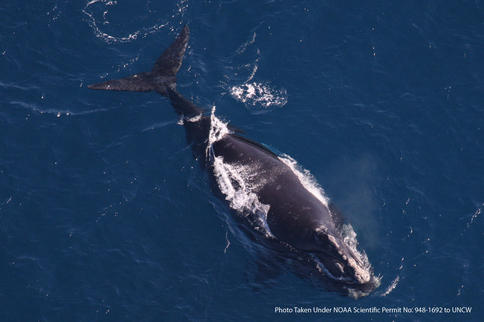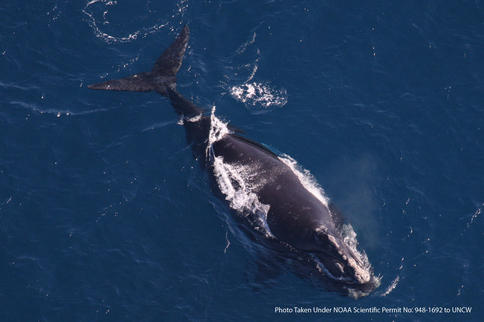SAVANNAH, Ga. – Biologists conducting a survey for the U.S. military said Tuesday they photographed an endangered right whale giving birth near a proposed Navy training range off the Georgia and Florida coasts.
The news caused waves of excitement among researchers and conservationists. Experts said it was only the second time that right whales have been documented giving birth in the wild. And environmentalists opposed to the Navy’s plans said the sighting bolsters their argument that submarine warfare training in the area would pose a threat to the rare species.
“We cannot have undersea warfare training taking place in that area where mother whales are going to give birth to their calves,” said Sharon Young, marine issues field director for the Humane Society, which sued the Navy in January over the training range.
Researchers say only about 400 North Atlantic right whales remain, and each whale killed by ship strikes, entanglement in fishing lines and other underwater gear is considered a large step toward extinction.
The right whales migrate each winter to the warm, shallow waters off southern Georgia and northern Florida to birth their calves. In nearby Atlantic waters, but farther out to sea, the Navy plans to build a $100 million range for training ships, submarines and aircraft.
Biologist William McLellan said his research team photographed the whale birth Saturday about 40 miles offshore from Jacksonville, Fla. His research team was conducting an aerial survey of marine species near the proposed training area.
McLellan said Tuesday that the scientists were tracking a female right whale when it dove underwater for about 10 minutes and then resurfaced along with a plume of blood.
“At first they thought it had been bitten by a shark,” McLellan said. “And then this little thing pops up off to the side. It turned out to be a baby calf.”
The Navy said Tuesday the whale birth was at least 10 miles outside the boundary of its planned Undersea Warfare Training Range.
The range would be located over 500 square nautical miles, about 50 miles offshore.
“From what we would be doing on the range, there would be no significant impact to the right whales,” said Jene Nissen, the range’s program director.
Send questions/comments to the editors.




Success. Please wait for the page to reload. If the page does not reload within 5 seconds, please refresh the page.
Enter your email and password to access comments.
Hi, to comment on stories you must . This profile is in addition to your subscription and website login.
Already have a commenting profile? .
Invalid username/password.
Please check your email to confirm and complete your registration.
Only subscribers are eligible to post comments. Please subscribe or login first for digital access. Here’s why.
Use the form below to reset your password. When you've submitted your account email, we will send an email with a reset code.